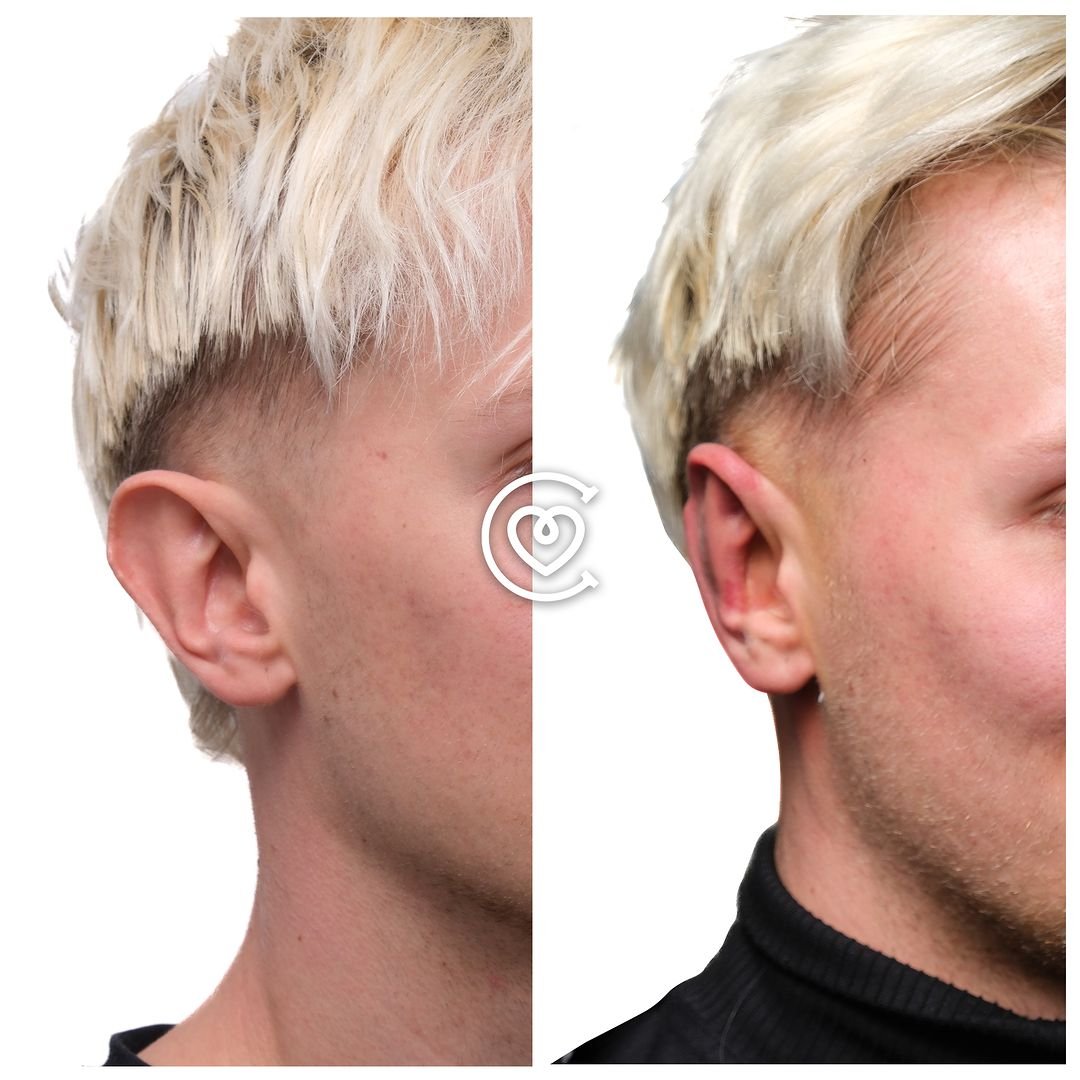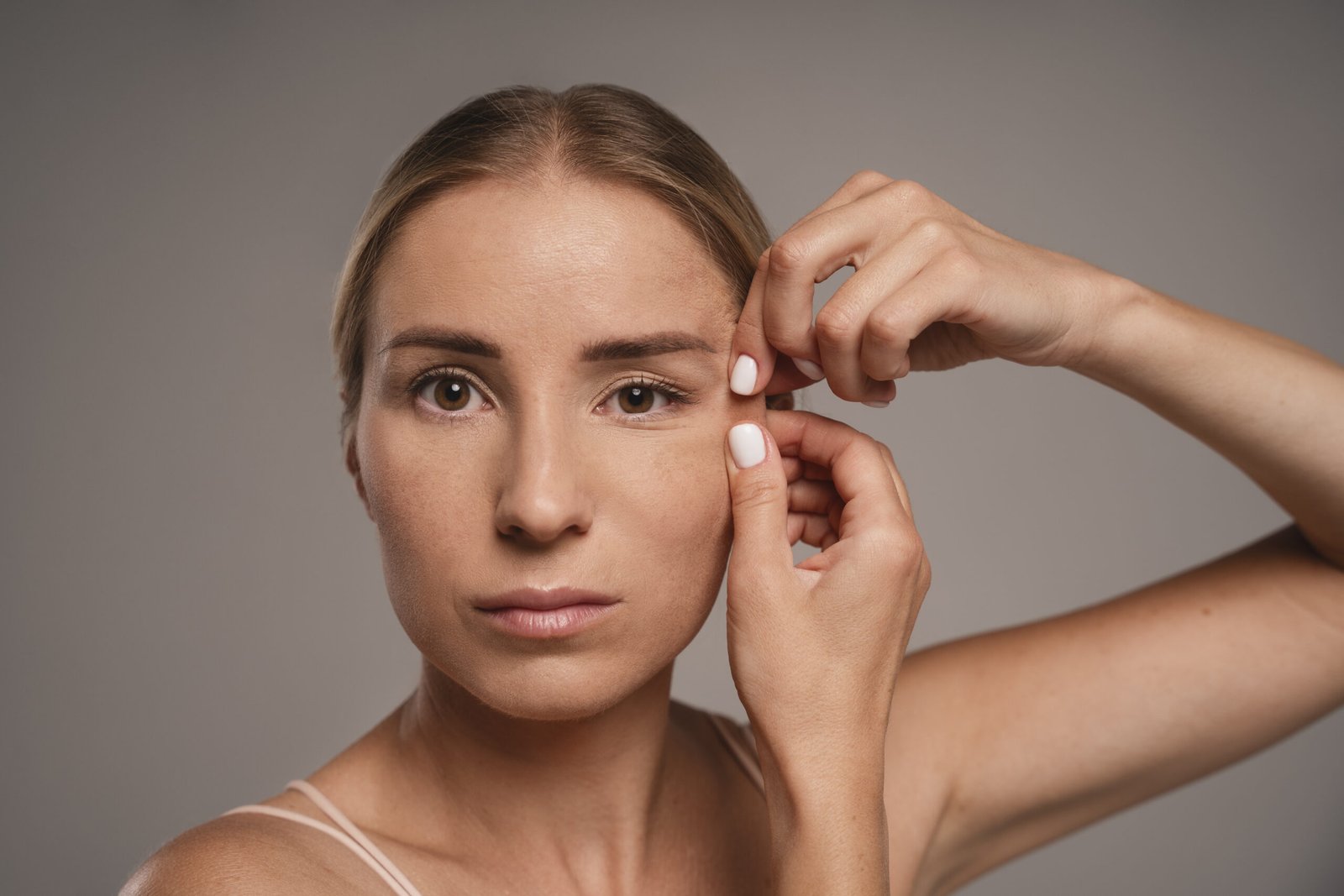What is Otoplasty?
Cosmetic ear surgery, commonly known as Otoplasty, aims to alter the shape, position, or size of the ears. People frequently choose Otoplasty when bothered by the prominence of their ears, desiring a change in the extent to which their ears protrude from the head. Additionally, individuals with misshapen ears due to injury or birth defects also contemplate this procedure.
Otoplasty is a viable option for individuals of any age, provided that the ears have reached their full size, typically after the age of 5, extending into adulthood. In cases where a child is born with prominent ears or other ear-shape issues, early intervention through splinting immediately after birth may effectively address and correct these concerns.
Why is Otoplasty done
Consider Otoplasty if:
- Your ears protrude prominently from your head.
- Your ears are disproportionately large in relation to your head.
- You’re unhappy with the results of a previous ear surgery.
Surgeons typically perform this procedure on both ears to attain optimal symmetry. It is important to note that while Otoplasty can enhance the appearance of your ears, it does not affect the location of your ears or impact your ability to hear.
What are the risks associated with Otoplasty?
Like any major surgery, Otoplasty carries certain risks, which include the potential for bleeding, infection, and adverse reactions to anesthesia. Additional risks associated with Otoplasty encompass:
- Scarring: While scars are permanent, they are typically discreetly located behind or within the creases of your ears.
- Asymmetry in Ear Placement: Changes during the healing process may lead to asymmetry in the placement of the ears. Additionally, the surgery may not entirely correct preexisting asymmetry.
- Changes in Skin Sensation: Repositioning of the ears during Otoplasty can temporarily affect skin sensation in the area. Although rare, such changes can occasionally be permanent.
- Allergic Reaction: There is a possibility of having an allergic reaction to surgical tape or other materials used during or after the procedure.
- Problems with Stitches: Stitches used to secure the new shape of the ear may surface and require removal, potentially causing inflammation. This might necessitate additional surgery.
- Overcorrection: Otoplasty has the potential to create unnatural contours, making the ears appear excessively pinned back.
It is crucial to thoroughly discuss these risks with your healthcare provider before deciding to undergo Otoplasty.
How do you prepare for Otoplasty Surgery?
When consulting with a plastic surgeon regarding otoplasty, your initial visit will likely involve:
- Reviewing Your Medical History: Prepare to furnish information about your current and past medical conditions, with a specific emphasis on any history of ear infections. Your doctor may inquire about medications you are currently taking or have recently taken, as well as any previous surgeries.
- Physical Examination: A thorough examination of your ears, considering aspects like their placement, size, shape, and symmetry, will help your doctor determine suitable treatment options. In some cases, your doctor may take pictures of your ears for inclusion in your medical record.
- Discussion of Expectations: Your surgeon will engage in a discussion about why you are seeking otoplasty and what specific outcomes you hope to achieve. It’s important to have a clear understanding of the potential risks, such as the possibility of overcorrection.
If your doctor considers you a suitable candidate for otoplasty, they may offer recommendations for necessary preparations before the procedure.
What should be avoided before Otoplasty?
Your doctor is likely to advise you to avoid taking aspirin, anti-inflammatory drugs, and herbal supplements, as these substances can contribute to an increased risk of bleeding.
Precaution to adhere to before Otoplasty
Smoking has the effect of reducing blood flow in the skin, which can impede the healing process. If you are a smoker, your doctor will likely advise you to quit smoking both before the surgery and during the recovery period.
Additionally, it is important to arrange for someone to drive you home following the surgery and stay with you during the initial night of your recovery. Having support during this time is crucial for a smooth and safe recuperation process.
What to expect from Otoplasty?
Before
Otoplasty can take place either in a hospital setting or at an outpatient surgical facility. The method of anesthesia used during the procedure may vary. Sometimes, the medical team administers sedation and local anesthesia, numbing only a specific part of your body. Alternatively, they may use general anesthesia, inducing unconsciousness, before starting the procedure.
How Otoplasty is performed
The techniques employed in Otoplasty vary depending on the required corrections. The chosen technique by your plastic surgeon dictates the placement of incisions and the subsequent scarring.
Incisions may be made:
- On the backs of your ears
- Within the inner creases of your ears
Following the incisions, your surgeon may eliminate excess cartilage and skin. Surgeons then fold the cartilage into the desired position and secure it using internal stitches. They use additional stitches to close the incisions. The entire procedure generally lasts around two hours.
After otoplasty, bandages will cover your ears to offer protection and support. It is normal to experience some discomfort and itching during this period. Take the prescribed pain medication as directed by your doctor. If you notice an increase in discomfort after taking the medication, contact your doctor promptly.
To alleviate pressure on your ears, avoid sleeping on your side and refrain from rubbing or applying excessive force to the incisions. Consider opting for button-down shirts or those with loose-fitting collars.
A few days after the procedure, your doctor will remove the bandages. Anticipate swelling and redness in your ears at this stage. Your doctor may recommend wearing a loose headband that covers your ears at night for a few weeks to prevent unintentionally pulling your ears forward while sleeping.
Discuss with your doctor the timeline for removing stitches, as some dissolve on their own, while others may need removal at the doctor’s office in the weeks following the procedure.
Seek guidance from your doctor on when it’s appropriate to resume daily activities, including bathing and physical activity.
Outcomes of Otoplasty
Upon the removal of your bandages, you will observe an immediate and permanent change in the appearance of your ears. If, however, you find yourself dissatisfied with the results, it is advisable to discuss the option of revision surgery with your surgeon. They can provide guidance on potential adjustments to achieve the desired outcome.
Still Not Sure?
Observing proper aftercare will expedite the healing process following otoplasty. Certain recommendations and advices from Cayra Clinic’s expert medical team ensure a hassle free recovery for our patients.
The end goal is to reshape or reposition the ears.
Cayra Clinic’s board-certified surgeons and doctors actively work to mitigate the potential risks associated with any procedure. Get in touch with our expert medical team, to start discussing your goals and conditions. Receive a highly personalized treatment plan at a budget friendly cost, and let us take care of you in your otoplasty journey.
Feel free to connect with one of our representatives for a free consultation.
Cayra Clinic. Your Beauty Reflects You.
Otoplasty FAQ:
- How expensive is otoplasty?
- Otoplasty costs vary, but the average is around $5,000. However at Cayra Clinic, the cost is much more budget friendly and a personalized treatment plan is prepared for our valuable guests from around the world. Feel free to get in touch with our experts and combine your otoplasty surgery with a little vacation in Turkey.
- How long is an otoplasty?
- The procedure typically takes about two hours.
- Is otoplasty worth it?
- It depends on individual preferences. Many find it worthwhile for improved ear appearance.
- Should I get otoplasty?
- This decision is personal. Consult with our medical experts to discuss your goals and expectations.
- Can otoplasty be covered by insurance?
- Typically, insurance doesn’t cover elective cosmetic procedures like otoplasty.
- Can otoplasty go wrong?
- Complications are rare but possible. Cayra Clinic’s expert and highly experienced plastic surgeons minimize the risks associated with Otoplasty.
- Can otoplasty fail?
- Success rates are high, but outcomes vary. Get in touch with our medical team to discuss your expectations.
- Can otoplasty make ears smaller?
- Otoplasty can address size concerns by reshaping and repositioning the ears.
- How is otoplasty performed?
- Incisions are made, excess cartilage is removed, and the ear is reshaped and secured with stitches.
- When is otoplasty performed?
- Otoplasty can be performed once the ears have reached full size, usually after age 5.
- How long does otoplasty last?
- Results are permanent, but individual experiences may vary.
- Can ears stick out again after otoplasty?
- While rare, there’s a slight possibility. Follow post-surgery guidelines to minimize risks.
- Who performs otoplasty?
- Board-certified plastic surgeons typically perform otoplasty.
- Who does otoplasty?
- Qualified plastic surgeons specialize in performing otoplasty.
- How much is otoplasty?
- Costs vary but average around $5,000, excluding additional fees.
- What is otoplasty?
- Otoplasty is cosmetic ear surgery to alter ear shape, position, or size.
- What kind of doctor does otoplasty?
- Board-certified plastic surgeons specialize in otoplasty procedures.
- Why does otoplasty fail?
- Failures are rare, but they can occur due to complications during or after surgery.
- Why does my otoplasty hurt?
- Discomfort is normal after surgery. Cayra Clinic provides proper pain management and after-care guidelines for a more smoother recovery process.
- Why do otoplasty?
- Individuals choose otoplasty for cosmetic reasons to enhance the appearance of their ears.
- Will insurance cover otoplasty?
- Typically, insurance does not cover elective cosmetic procedures like otoplasty.
- Can ears stick out again after otoplasty?
- While rare, there is still a slight possibility. Follow post-surgery guidelines to minimize risks any risks associated with the outcome.
- How long does otoplasty last?
- Results are permanent, but individual experiences may vary.
- Is otoplasty permanent?
- Yes, otoplasty provides permanent results.
- How long is an otoplasty?
- The procedure typically takes about two hours.
- Is otoplasty worth it?
- It depends on individual preferences. Many find it worthwhile for improved ear appearance.




